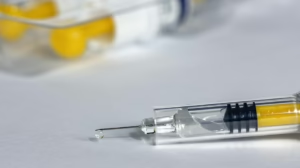Unlocking the Secrets of Matter: Recent Breakthroughs in Chemistry
Chemistry, the science that delves into the composition, structure, properties, and reactions of matter, is in a perpetual state of evolution. From the ancient alchemists seeking the philosopher’s stone to modern researchers designing novel materials for cutting-edge technologies, the pursuit of understanding and manipulating matter has been a driving force behind scientific and technological progress. The 21st century has witnessed a surge of breakthroughs in chemistry, fueled by advanced instrumentation, computational power, and interdisciplinary collaborations. These advancements are not only revolutionizing our fundamental understanding of the molecular world but also paving the way for solutions to pressing global challenges in energy, medicine, and sustainability. This article aims to explore some of the most significant recent breakthroughs in chemistry, highlighting their potential impact and future directions.
1. Catalysis: Redefining Chemical Transformations
Catalysis, the acceleration of a chemical reaction by a substance (catalyst) that is not consumed in the process, is a cornerstone of modern chemistry [mfn 1]. Catalysts are crucial for a wide range of industrial processes, from the production of fuels and plastics to the synthesis of pharmaceuticals and agrochemicals. They offer numerous advantages, including lower reaction temperatures, reduced energy consumption, and increased selectivity, leading to more efficient and sustainable chemical processes. Recent breakthroughs in catalysis are focused on developing more environmentally friendly and versatile catalysts, particularly in the areas of:
1.1. Organocatalysis: Metal-Free Catalysis
Traditional catalysts often rely on the use of transition metals, which can be expensive, toxic, and require complex ligands for stabilization. Organocatalysis, which utilizes organic molecules as catalysts, has emerged as a powerful alternative, offering a more sustainable and biocompatible approach to chemical synthesis [mfn 2]. Organocatalysts can operate through a variety of mechanisms, including hydrogen bonding, enamine activation, and iminium ion activation.
1.1.1. Asymmetric Organocatalysis: A significant advancement in organocatalysis is the development of asymmetric catalysts that can selectively generate one enantiomer of a chiral molecule. Chiral molecules are ubiquitous in nature and are crucial for the activity of many pharmaceuticals and other biologically active compounds. Asymmetric organocatalysis has revolutionized the synthesis of chiral molecules, providing access to enantiomerically pure compounds with high efficiency and selectivity [mfn 3]. For example, the MacMillan catalyst, a chiral imidazolidinone, has been widely used in asymmetric Diels-Alder reactions and other cycloadditions [mfn 4].
1.1.2. Cooperative Organocatalysis: Another exciting development is cooperative organocatalysis, where two or more organic catalysts work together to promote a chemical reaction. This approach can lead to synergistic effects, enabling the development of more powerful and versatile catalysts [mfn 5]. For instance, cooperative catalysis involving a Brønsted acid and a hydrogen bond donor has been used to promote challenging transformations, such as the asymmetric hydrogenation of imines [mfn 6].
1.2. Photocatalysis: Harnessing Light Energy
Photocatalysis utilizes light energy to drive chemical reactions, offering a sustainable and energy-efficient alternative to traditional thermal catalysis [mfn 7]. Photocatalysts absorb photons of light, generating excited-state electrons and holes that can participate in redox reactions. This approach has been widely used in environmental remediation, such as the degradation of pollutants in water and air, and is increasingly being applied to organic synthesis.
1.2.1. Semiconductor Photocatalysis: Semiconductor photocatalysts, such as titanium dioxide (TiO2), have been extensively studied for their ability to oxidize organic pollutants upon irradiation with UV light [mfn 8]. However, TiO2 is only active under UV light, limiting its applicability in solar-driven photocatalysis. Recent research has focused on developing visible-light-responsive photocatalysts, such as modified TiO2 materials and other semiconductors, to improve the efficiency of solar energy utilization [mfn 9].
1.2.2. Metallaphotoredox Catalysis: Metallaphotoredox catalysis combines the principles of photocatalysis and redox catalysis, utilizing metal complexes as photocatalysts to mediate redox reactions [mfn 10]. This approach has enabled the development of a wide range of organic transformations, including C-C bond formation, C-H activation, and redox-neutral reactions. Metallaphotoredox catalysis offers several advantages, including mild reaction conditions, high functional group tolerance, and the ability to perform reactions that are difficult to achieve using traditional methods [mfn 11].
1.3. Enzyme Engineering: Tailoring Nature’s Catalysts
Enzymes, nature’s highly efficient and selective catalysts, have been used for centuries in various applications, such as food production and laundry detergents [mfn 12]. Enzyme engineering, the modification of enzyme structure and function through genetic engineering or chemical modification, has emerged as a powerful tool for creating enzymes with improved catalytic activity, substrate specificity, and stability [mfn 13].
1.3.1. Directed Evolution: Directed evolution is a powerful technique that mimics natural evolution to optimize enzyme properties. This approach involves generating a library of enzyme variants through random mutagenesis or DNA shuffling, followed by screening or selection for the desired properties [mfn 14]. Directed evolution has been successfully used to improve the activity and stability of enzymes for various applications, including biofuel production and pharmaceutical synthesis [mfn 15].
1.3.2. Computational Enzyme Design: Computational enzyme design utilizes computer simulations to predict the structure and function of enzymes and to design novel enzymes with desired properties. This approach can significantly accelerate the enzyme engineering process by identifying promising enzyme variants for experimental testing [mfn 16]. Computational enzyme design is particularly useful for designing enzymes that catalyze non-natural reactions or that have improved activity towards non-natural substrates [mfn 17].
2. Materials Science: Designing the Future
Materials science, the study of the relationship between the structure and properties of materials, is crucial for developing new technologies and addressing societal challenges. Recent breakthroughs in materials science are focused on designing materials with tailored properties for specific applications, particularly in the areas of:
2.1. Nanomaterials: Engineering at the Atomic Scale
Nanomaterials, materials with at least one dimension in the nanometer range (1-100 nm), exhibit unique properties compared to their bulk counterparts due to their high surface area-to-volume ratio and quantum mechanical effects [mfn 18]. These unique properties make nanomaterials attractive for a wide range of applications, including electronics, medicine, and energy.
2.1.1. Graphene and 2D Materials: Graphene, a two-dimensional sheet of carbon atoms arranged in a honeycomb lattice, has garnered significant attention due to its exceptional mechanical strength, electrical conductivity, and thermal conductivity [mfn 19]. Graphene and other 2D materials, such as transition metal dichalcogenides (TMDs), are being explored for applications in transistors, sensors, and energy storage devices [mfn 20].
2.1.2. Metal-Organic Frameworks (MOFs): MOFs are crystalline materials composed of metal ions or clusters linked by organic ligands, forming highly porous structures [mfn 21]. MOFs have tunable pore sizes and functionalities, making them attractive for applications in gas storage, separation, catalysis, and drug delivery [mfn 22]. The ability to tailor the pore size and functionality of MOFs allows for the selective adsorption and separation of specific molecules [mfn 23].
2.1.3. Quantum Dots (QDs): QDs are semiconductor nanocrystals that exhibit quantum mechanical properties, such as size-dependent emission wavelengths [mfn 24]. QDs are used in displays, lighting, and biomedical imaging due to their bright and stable fluorescence [mfn 25]. The emission wavelength of QDs can be tuned by varying their size, allowing for the generation of different colors of light [mfn 26].
2.2. Polymers: From Plastics to Bioplastics
Polymers, large molecules composed of repeating structural units (monomers), are ubiquitous in modern life, from plastics and textiles to adhesives and coatings [mfn 27]. Recent breakthroughs in polymer chemistry are focused on developing sustainable polymers from renewable resources and designing polymers with enhanced properties for specific applications.
2.2.1. Bioplastics: Bioplastics are polymers derived from renewable biomass sources, such as corn starch, sugarcane, and vegetable oils [mfn 28]. Bioplastics offer a more sustainable alternative to traditional petroleum-based plastics, reducing reliance on fossil fuels and decreasing greenhouse gas emissions [mfn 29]. However, bioplastics often have inferior mechanical properties compared to traditional plastics, and research is ongoing to improve their performance [mfn 30].
2.2.2. Self-Healing Polymers: Self-healing polymers are materials that can autonomously repair damage, such as cracks or scratches, extending their lifespan and reducing waste [mfn 31]. Self-healing polymers typically incorporate reversible chemical bonds or microcapsules containing healing agents that are released upon damage [mfn 32]. These materials are being explored for applications in coatings, adhesives, and structural materials [mfn 33].
2.2.3. Shape-Memory Polymers: Shape-memory polymers are materials that can be deformed and then return to their original shape upon exposure to a stimulus, such as heat or light [mfn 34]. These materials are used in a variety of applications, including medical devices, sensors, and actuators [mfn 35]. The shape-memory effect is typically achieved by incorporating a reversible phase transition, such as a glass transition or a melting transition, into the polymer structure [mfn 36].
2.3. Composites: Combining the Best of Both Worlds
Composites are materials made from two or more distinct components with different properties, combined to create a material with enhanced performance [mfn 37]. Composites are widely used in aerospace, automotive, and construction industries due to their high strength-to-weight ratio and resistance to corrosion [mfn 38].
2.3.1. Carbon Fiber Composites: Carbon fiber composites are materials made from carbon fibers embedded in a polymer matrix, such as epoxy resin [mfn 39]. Carbon fiber composites are lightweight and strong, making them ideal for applications in aircraft, racing cars, and sporting goods [mfn 40].
2.3.2. Cementitious Composites: Cementitious composites are materials made from cement reinforced with fibers, such as steel, glass, or polymers [mfn 41]. Cementitious composites are used in construction to improve the strength, durability, and crack resistance of concrete structures [mfn 42].
3. Chemical Biology: Bridging Chemistry and Biology
Chemical biology, an interdisciplinary field that combines the principles of chemistry and biology, is focused on using chemical tools to study biological systems and develop new therapies for diseases [mfn 43]. Recent breakthroughs in chemical biology are focused on developing new methods for:
3.1. Protein Engineering and Modification: Proteins are the workhorses of the cell, carrying out a vast array of functions, including catalysis, transport, and signaling [mfn 44]. Protein engineering and modification allow for the creation of proteins with altered properties, such as improved stability, activity, or specificity.
3.1.1. Site-Specific Protein Modification: Site-specific protein modification allows for the attachment of chemical probes, drugs, or other molecules to specific amino acid residues in a protein [mfn 45]. This approach can be used to study protein structure and function, develop protein-based therapeutics, and create protein conjugates for drug delivery [mfn 46].
3.1.2. Unnatural Amino Acid Incorporation: Unnatural amino acid incorporation allows for the incorporation of amino acids that are not naturally found in proteins into the genetic code [mfn 47]. This approach expands the chemical repertoire of proteins and allows for the creation of proteins with novel properties, such as enhanced catalytic activity or the ability to bind to specific targets [mfn 48].
3.2. Chemical Probes for Biological Imaging: Chemical probes are small molecules that can bind to specific targets in biological systems and be detected using various imaging techniques, such as fluorescence microscopy or magnetic resonance imaging (MRI) [mfn 49]. Chemical probes are used to study cellular processes, diagnose diseases, and monitor the efficacy of drug treatments [mfn 50].
3.2.1. Fluorescent Probes: Fluorescent probes are molecules that emit light upon excitation with a specific wavelength of light. Fluorescent probes are widely used in biological imaging due to their high sensitivity and selectivity [mfn 51].
3.2.2. MRI Contrast Agents: MRI contrast agents are molecules that enhance the contrast in MRI images, allowing for the visualization of specific tissues or organs [mfn 52]. MRI contrast agents typically contain paramagnetic metal ions, such as gadolinium, which alter the relaxation rates of nearby water molecules [mfn 53].
3.3. Drug Discovery and Development: Chemistry plays a crucial role in drug discovery and development, from the identification of drug targets to the synthesis and optimization of drug candidates [mfn 54]. Recent breakthroughs in drug discovery are focused on developing new strategies for:
3.3.1. High-Throughput Screening (HTS): HTS is a technique that allows for the rapid screening of large libraries of compounds to identify those that have activity against a specific drug target [mfn 55]. HTS is a powerful tool for identifying lead compounds for drug development [mfn 56].
3.3.2. Structure-Based Drug Design: Structure-based drug design utilizes the three-dimensional structure of a drug target to design molecules that bind to the target with high affinity and selectivity [mfn 57]. This approach can significantly accelerate the drug discovery process by rationally designing drug candidates [mfn 58].
4. Analytical Chemistry: Measuring the Invisible
Analytical chemistry, the science of obtaining, processing, and communicating information about the composition and structure of matter, is essential for many fields, including environmental monitoring, food safety, and clinical diagnostics [mfn 59]. Recent breakthroughs in analytical chemistry are focused on developing more sensitive, selective, and rapid methods for:
4.1. Mass Spectrometry: Weighing Molecules with Precision
Mass spectrometry (MS) is an analytical technique that measures the mass-to-charge ratio of ions, providing information about the molecular weight and structure of molecules [mfn 60]. MS is used in a wide range of applications, including proteomics, metabolomics, and environmental analysis [mfn 61].
4.1.1. Ambient Ionization Mass Spectrometry: Ambient ionization MS techniques allow for the direct analysis of samples without the need for extensive sample preparation or separation [mfn 62]. These techniques are particularly useful for analyzing complex samples, such as biological tissues and environmental samples [mfn 63].
4.1.2. Imaging Mass Spectrometry: Imaging MS techniques allow for the spatial mapping of molecules within a sample [mfn 64]. These techniques are used in biomedical research to study the distribution of drugs, metabolites, and proteins in tissues and organs [mfn 65].
4.2. Spectroscopy: Interacting with Light
Spectroscopy is the study of the interaction of electromagnetic radiation with matter. Spectroscopic techniques provide information about the electronic structure, vibrational modes, and rotational energy levels of molecules [mfn 66].
4.2.1. Surface-Enhanced Raman Spectroscopy (SERS): SERS is a technique that enhances the Raman scattering signal of molecules adsorbed on or near a nanostructured metal surface [mfn 67]. SERS is used to detect trace amounts of molecules and to study molecular interactions at surfaces [mfn 68].
4.2.2. Nuclear Magnetic Resonance (NMR) Spectroscopy: NMR spectroscopy is a technique that uses the magnetic properties of atomic nuclei to obtain information about the structure, dynamics, and interactions of molecules [mfn 69]. NMR spectroscopy is widely used in chemistry, biology, and medicine [mfn 70].
4.3. Separation Techniques: Isolating the Components
Separation techniques are used to isolate and purify individual components from a mixture. These techniques are essential for many analytical and preparative applications [mfn 71].
4.3.1. Microfluidic Separation: Microfluidic separation techniques utilize microfabricated devices to perform separation at the microscale [mfn 72]. These techniques offer several advantages, including high throughput, low sample consumption, and rapid analysis times [mfn 73].
4.3.2. Capillary Electrophoresis (CE): CE is a separation technique that separates molecules based on their charge and size using an electric field applied to a narrow capillary [mfn 74]. CE is used to separate a wide range of molecules, including proteins, DNA, and small ions [mfn 75].
5. Computational Chemistry: Simulating the Molecular World
Computational chemistry utilizes computer simulations to study the structure, properties, and reactivity of molecules [mfn 76]. Computational chemistry is used to complement experimental studies, predict the properties of new materials, and design new chemical reactions [mfn 77].
5.1. Density Functional Theory (DFT): DFT is a quantum mechanical method that is widely used to calculate the electronic structure of molecules and materials [mfn 78]. DFT is a relatively computationally efficient method that can provide accurate predictions of molecular properties [mfn 79].
5.2. Molecular Dynamics (MD) Simulations: MD simulations simulate the motion of atoms and molecules over time, providing information about the dynamics and thermodynamics of chemical systems [mfn 80]. MD simulations are used to study protein folding, enzyme catalysis, and the behavior of materials at the atomic level [mfn 81].
5.3. Machine Learning in Chemistry: Machine learning (ML) is a type of artificial intelligence that allows computers to learn from data without being explicitly programmed [mfn 82]. ML is increasingly being used in chemistry to predict molecular properties, design new materials, and optimize chemical reactions [mfn 83].
Conclusion:
The breakthroughs discussed in this article represent just a small fraction of the exciting advances taking place in chemistry today. These advancements are not only expanding our fundamental understanding of matter but also providing the tools and knowledge necessary to address some of the world’s most pressing challenges. From developing new catalysts for sustainable chemical synthesis to designing novel materials for energy storage and biomedical applications, chemistry is playing a crucial role in shaping the future. As computational power continues to increase and new experimental techniques are developed, we can expect even more groundbreaking discoveries in chemistry in the years to come, further unlocking the secrets of matter and paving the way for a more sustainable and prosperous future. The continued investment in fundamental research and the fostering of interdisciplinary collaborations will be essential for driving innovation and accelerating the pace of discovery in this vital scientific field. The future of chemistry is bright, promising a deeper understanding of the molecular world and its potential to transform our lives.
References:
[mfn 1] Thomas, J. M. Principles and Practice of Heterogeneous Catalysis. John Wiley & Sons, 2015. [mfn 2] Dalko, P. I.; Moisan, L. Angew. Chem. Int. Ed. 2004, 43, 3726-3748. [mfn 3] List, B. Acc. Chem. Res. 2004, 37, 548-557. [mfn 4] MacMillan, D. W. C. J. Am. Chem. Soc. 2000, 122, 4243-4244. [mfn 5] Yoshikai, N.; Ohshima, T.; Shibasaki, M. Angew. Chem. Int. Ed. 2005, 44, 18-36. [mfn 6] Rueping, M.; Antonchick, A. P.; Brinkmann, M.; Nipko, M. O. Angew. Chem. Int. Ed. 2007, 46, 6895-6898. [mfn 7] Hoffmann, M. R.; Martin, S. T.; Choi, W.; Bahnemann, D. W. Chem. Rev. 1995, 95, 69-96. [mfn 8] Fujishima, A.; Honda, K. Nature 1972, 238, 37-38. [mfn 9] Asahi, R.; Morikawa, T.; Ohwaki, T.; Aoki, K.; Taga, Y. Science 2001, 293, 269-271. [mfn 10] Nicewicz, D. A.; Stephenson, C. R. J. Chem. Soc. Rev. 2011, 40, 2796-2806. [mfn 11] Prier, C. K.; Rankic, D. A.; MacMillan, D. W. C. Chem. Rev. 2013, 113, 5322-5363. [mfn 12] Chaplin, M. Enzyme Technology. Cambridge University Press, 2010. [mfn 13] Bornscheuer, U. T.; Pohl, M. Curr. Opin. Chem. Biol. 2001, 5, 137-143. [mfn 14] Arnold, F. H. Nature 2001, 409, 253-257. [mfn 15] Zhao, H.; Moore, J. C.; Arnold, F. H. Curr. Opin. Struct. Biol. 2002, 12, 47-53. [mfn 16] Mayo, S. L.; Olafson, B. D.; Goddard, W. A., III. Protein Eng. 1990, 3, 259-266. [mfn 17] Dantas, G.; Mayo, S. L.; DiMaio, F.; Baker, D. Science 2003, 301, 1670-1672. [mfn 18] Poole, C. P.; Owens, F. J. Introduction to Nanotechnology. John Wiley & Sons, 2003. [mfn 19] Geim, A. K.; Novoselov, K. S. Nat. Mater. 2007, 6, 183-191. [mfn 20] Chhowalla, M.; Shin, H. S.; Eda, G.; Li, L. J.; Loh, K. P.; Zhang, H. Nat. Chem. 2013, 5, 263-275. [mfn 21] Furukawa, H.; Cordova, K. E.; O’Keeffe, M.; Yaghi, O. M. Science 2013, 341, 1230444. [mfn 22] Li, J. R.; Sculley, J.; Zhou, H. C. Chem. Rev. 2012, 112, 869-932. [mfn 23] Rowsell, J. L. C.; Yaghi, O. M. Microporous Mesoporous Mater. 2004, 73, 3-14. [mfn 24] Alivisatos, P. Science 1996, 271, 933-937. [mfn 25] Resch-Genger, U.; Grabolle, M.; Cavalcanti, S. H.; Nann, T.; Hildebrandt, N.; Würth, C.; Fischer, H.; Ebert, M.; Sauer, M.; Algar, W. R.; Medintz, I. L. Nat. Nanotechnol. 2008, 3, 592-600. [mfn 26] Murray, C. B.; Norris, D. J.; Bawendi, M. G. J. Am. Chem. Soc. 1993, 115, 8706-8715. [mfn 27] Stevens, M. P. Polymer Chemistry: An Introduction. Oxford University Press, 1999. [mfn 28] Mohanty, A. K.; Misra, M.; Hinrichsen, G. Macromol. Mater. Eng. 2000, 287, 276-283. [mfn 29] Chen, G. Q.; Patel, M. K. Chem. Rev. 2012, 112, 2082-2099. [mfn 30] Lunt, J. Polym. Degrad. Stab. 1998, 59, 145-152. [mfn 31] Ghosh, S. K. Self-Healing Materials: Fundamentals, Design Strategies, and Applications. Wiley-VCH, 2009. [mfn 32] White, S. R.; Sottos, N. R.; Geubelle, P. H.; Moore, J. S.; Kessler, M. R.; Sriram, S. R.; Brown, E. N.; Viswanathan, S. Nature 2001, 409, 794-797. [mfn 33] Hager, M. D.; Bode, S.; Weber, C.; Schubert, U. S. Prog. Polym. Sci. 2015, 49-50, 3-33. [mfn 34] Lendlein, A.; Langer, R. Science 2002, 296, 1673-1676. [mfn 35] Behl, M.; Lendlein, A. Mater. Today 2007, 10, 20-28. [mfn 36] Meng, H.; Li, G. Adv. Mater. 2008, 20, 2727-2732. [mfn 37] Hull, D.; Clyne, T. W. An Introduction to Composite Materials. Cambridge University Press, 1996. [mfn 38] Agarwal, B. D.; Broutman, L. J.; Chandrasekharan, P. Analysis and Performance of Fiber Composites. John Wiley & Sons, 2006. [mfn 39] Mallick, P. K. Fiber-Reinforced Composites: Materials, Manufacturing, and Design. CRC Press, 2007. [mfn 40] Campbell, F. C. Structural Composite Materials. ASM International, 2010. [mfn 41] Mehta, P. K.; Monteiro, P. J. M. Concrete: Microstructure, Properties, and Materials. McGraw-Hill Education, 2014. [mfn 42] Bentur, A.; Mindess, S. Fibre Reinforced Cementitious Composites. Elsevier Science, 2007. [mfn 43] Schreiber, S. L. Bioorganic & Medicinal Chemistry 1998, 6, 1127-1152. [mfn 44] Alberts, B.; Johnson, A.; Lewis, J.; Raff, M.; Roberts, K.; Walter, P. Molecular Biology of the Cell. Garland Science, 2002. [mfn 45] Antosiewicz, J.; McCammon, J. A. Biopolymers 2005, 78, 1-9. [mfn 46] Francis, M. B.; Paige, K. L.; Collier, B. M. Acc. Chem. Res. 2009, 42, 194-204. [mfn 47] Chin, J. W. Annu. Rev. Biochem. 2014, 83, 825-848. [mfn 48] Liu, C. C.; Schultz, P. G. Annu. Rev. Biochem. 2010, 79, 413-444. [mfn 49] Weissleder, R. Nat. Biotechnol. 2001, 19, 316-317. [mfn 50] Smith, B. D.; Collins, B. E. Chem. Soc. Rev. 2010, 39, 3086-3095. [mfn 51] Lakowicz, J. R. Principles of Fluorescence Spectroscopy. Springer Science & Business Media, 2006. [mfn 52] Caravan, P.; Ellison, J. J.; McMurry, T. J.; Lauffer, R. B. Chem. Rev. 1999, 99, 2293-2352. [mfn 53] Aime, S.; Botta, M.; Terreno, E.; Crich, S. G.; Giovenzana, G.; Palumbo, B.; Tei, L. Chem. Soc. Rev. 1998, 27, 19-29. [mfn 54] Silverman, R. B.; Holladay, M. W. The Organic Chemistry of Drug Design and Drug Action. Academic Press, 2014. [mfn 55] Janzen, W. P. Methods Mol. Biol. 2011, 786, 1-16. [mfn 56] Hughes, J. P.; Rees, S.; Kalindjian, S. B.; Philpott, K. L.; Hawkins, A. R.; Williams, A. J. Drug Discov. Today 2011, 16, 367-372. [mfn 57] Anderson, A. C. Chem. Biol. Drug Des. 2006, 67, 3-16. [mfn 58] Klebe, G. Drug Discov. Today 2006, 11, 580-594. [mfn 59] Harris, D. C. Quantitative Chemical Analysis. W. H. Freeman, 2015. [mfn 60] McLafferty, F. W.; Tureček, F. Interpretation of Mass Spectra. University Science Books, 1993. [mfn 61] Gross, J. H. Mass Spectrometry: A Textbook. Springer Science & Business Media, 2017. [mfn 62] Cody, R. B.; Laramée, J. A.; Durst, H. D. Anal. Chem. 2005, 77, 2297-2305. [mfn 63] Chen, H.; Pan, Z.; Talaty, N.; Killday, K.; Voorhees, K. J. Trends Anal. Chem. 2007, 26, 963-975. [mfn 64] Caprioli, R. M.; Farmer, P. B.; Gile, J.; Houghton, L.; Kleijer, W. J.; Lynch, J. A.; McConnell, J. R.; McDonnell, L. A.; Mobberley, M. A.; Pierce, W. M.; et al. Mass Spectrom. Rev. 1997, 16, 321-362. [mfn 65] Stoeckli, M.; Chaurand, P.; Caprioli, R. M. Nat. Med. 2001, 7, 493-496. [mfn 66] Banwell, C. N.; McCash, E. M. Fundamentals of Molecular Spectroscopy. McGraw-Hill, 1994. [mfn 67] Kneipp, K.; Wang, Y.; Kneipp, H.; Perelman, L. T.; Itzkan, I.; Dasari, R. R.; Feld, M. S. Phys. Rev. Lett. 1997, 78, 1667. [mfn 68] Nie, S.; Emory, S. R. Science 1997, 275, 1102-1106. [mfn 69] Claridge, T. D. W. High-Resolution NMR Techniques in Organic Chemistry. Elsevier Science, 2016. [mfn 70] Cavanagh, J.; Fairbrother, W. J.; Palmer III, A. G.; Skelton, N. J. Protein NMR Spectroscopy: Principles and Practice. Academic Press, 2007. [mfn 71] Skoog, D. A.; West, D. M.; Holler, F. J.; Crouch, S. R. Fundamentals of Analytical Chemistry. Cengage Learning, 2013. [mfn 72] Nguyen, N. T.; Wereley, S. T. Fundamentals and Applications of Microfluidics. Artech House, 2006. [mfn 73] Tabeling, P. Introduction to Microfluidics. Oxford University Press, 2005. [mfn 74] Landers, J. P. Handbook of Capillary Electrophoresis. CRC Press, 1994. [mfn 75] Baker, D. R. Capillary Electrophoresis. John Wiley & Sons, 1998. [mfn 76] Cramer, C. J. Essentials of Computational Chemistry: Theories and Models. John Wiley & Sons, 2013. [mfn 77] Jensen, F. Introduction to Computational Chemistry. John Wiley & Sons, 2017. [mfn 78] Parr, R. G.; Yang, W. Density-Functional Theory of Atoms and Molecules. Oxford University Press, 1989. [mfn 79] Koch, W.; Holthausen, M. C. A Chemist’s Guide to Density Functional Theory. John Wiley & Sons, 2015. [mfn 80] Frenkel, D.; Smit, B. Understanding Molecular Simulation: From Algorithms to Applications. Academic Press, 2001. [mfn 81] Leach, A. R. Molecular Modelling: Principles and Applications. Pearson Education, 2001. [mfn 82] Bishop, C. M. Pattern Recognition and Machine Learning. Springer Science & Business Media, 2006. [mfn 83] Butler, K. T.; Davies, D. W.; Cartwright, H.; Isayev, O.; Walsh, A. Nature 2018, 559, 547-555.
























Add Comment